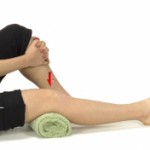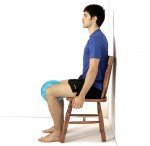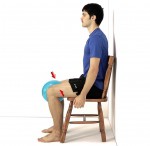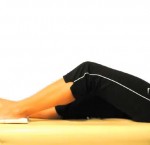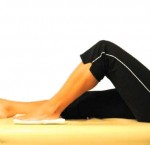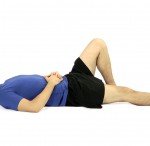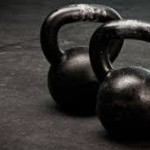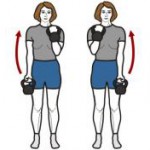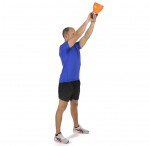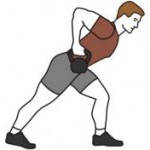Injuries to the knee are among the most common that individuals suffer from. If this category fits you, here are a few strengthening exercising specifically for the knee. They may seem simple but they are used for rehabilitation purposes and will build strength with flexion, extension, abduction, and adduction so you will be ready to move on to more complex exercises. These exercises can be incorporated with your weekly workout regimen, hopefully 3 days per week.
Exercise 1: Quad Sets
Perform this exercise sitting up or laying down. Extend the injured knee in front of you, and place a rolled towel directly underneath the knee cap. Next is to tighten the quads while driving the back of your knee into the towel and essentially holding them tight for about 5 seconds, then rest for up to 10 seconds and repeat. Perform this exercise for 3 sets of 10 repetitions.
Exercise 2: Adduction
This exercise is perform while sitting up, lying down, or in a chair. You will need a round ball of any kind such as a deflated basketball, kids play ball, or even a rolled up pillow. Place the object in between the knees and squeeze the object and holding the squeeze for about 5 seconds and rest for 10 seconds. This exercise should be 3 sets of 10 repetitions as well.
Exercise 3: Flexion and Extension
Flexion is another word for bending and Extension is another word for straightening. You will need a pillow case or even just your socks on, but preferably a pillow case. Place the leg with the injured knee in the pillow case and tie a knot. Before you begin, bend the other leg and then start by slowly gliding your foot forward until the leg is fully extended, and bring the foot slowly back towards you and repeat. Perform this exercise 3 set of 10 repetitions.
Exercise 4: Leg Raise
This exercise should be performed while lying down. Extend the injured knee/leg forward and bend the other knee. Start off with a quad set and slowly lift your leg about 6 inches of the floor and bring it back down. This will strengthen not only the knee but the quads, abdominals, and hip flexors which will increase walking and running stride.
Ade Amuda
Blogistics
